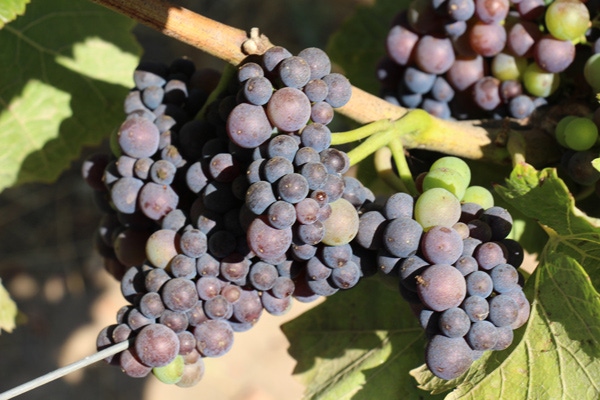
Production may have dropped this year for Wilson Vineyard’s wine grape crop, but quality of the fruit should top the charts, reports Ken Wilson.
He represents the fourth generation of his family to own and operate the Sacramento River Delta farm near Clarksburg, Calif. It includes 1,000 acres of grape vines and about 150 to 200 acres each of alfalfa and wheat.
The vineyard is within the Clarksburg appellation, which includes parts of Sacramento, Solano and Yolo Counties. Wilson takes advantage of the AVA’s long, dry growing season along with warm summer days and cool nights to grow about a dozen different grape varieties. In addition to the likes of Cabernet Sauvignon, Petite Syrah and Chardonnay, they include Chenin Blanc, Riesling and Viognier. Wilson Vineyards grows grapes for its own label and also sells grapes to other wineries in the Clarksburg, Napa, Sonoma and Paso Robles areas.
After bringing in three large crops in a row, Wilson expects vineyard production this year will be down, maybe as much as 15 percent below average.
“We’ll be taking a hit on some of the varieties, which came in quite a bit lighter than I had hoped for,” he says. “The vines probably wanted to take a rest this season.”
He expects to harvest a decent-size crop from his Cabernet Sauvignon, Merlot and Petite Syrah vines. Depending on location, he rates his Chardonnay production as no more than average or less. However, he suspects that yields of some of his other varieties could decline as much as 10 to 20 percent below normal.
“The wineries are going to be the big winners this year,” he says. “The quality of our grapes will be fabulous. They look really good, the best I’ve seen in a few years.”
In general, the berries are smaller than usual this season, Wilson notes. In particular, clusters of some of his white varieties and even Petite Syrah didn’t tighten as much with berry swelling as they typically do.
Normally, Wilson seeks to limit berry size by judicious use of water, particularly as the berries start to swell, except to minimize any heat stress. At the same time, he uses results of petiole testing at bloom and veraison to provide any needed nutrients through his drip system.
“We try to get shoot tip growth to stop by the middle of July,” Wilson says. “But, this year the vines are controlling bunch growth and fruit quality by themselves. The lighter tonnage is a lot easier for the vines to handle.”
In fact, he says, lower production this year helps explain the Aug. 4 start of his 2015 harvest. That’s more than two weeks sooner than his usual start date of around Aug. 20.
The first of the machine-picked grapes to come off were Sauvignon Blanc at 23º Brix. While that work was underway, the harvest progressed two nights later to Gewürztraminer (22º Brix, followed four nights after that by Chenin Blanc and Pinot Gris, both testing around 23º Brix.
Barring any weather or other problems, Wilson expects to finish this year’s harvest by the end of September with the last of his Cabernet Sauvignon, Merlot and Petite Syrah. Normally, his harvest extends into the first seven to 10 days of October.
Wilson, who relies on water from the Sacramento River to irrigate his vineyards, reports receiving adequate supplies of surface water for his crop. At the same time his cultural practices have helped to limit his water needs.
“We were fortunate enough to get the labor to hand-thin our fruit earlier than usual this year,” he says. “In addition to saving water, less fruit meant the vines didn’t have to work as hard.”
New technology – adding more soil moisture probes and installing a weather station to monitor vine moisture stress for more timely, more accurate water applications – has also helped conserve water, he adds.
About the Author(s)
You May Also Like




